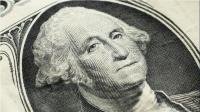U.S. equities fell sharply in April, with the S&P 500 recording its worst monthly decline since March 2020, as rising interest rates, high inflation and Russia’s ongoing invasion of Ukraine continue to be key headline risks. The Nasdaq Composite finished at a new low for 2022 and notched its worst month since 2008. Technology stocks have been the epicenter of the sell-off caused by higher interest rates dampening company growth estimates and lowering stock valuations. Furthermore, larger concerns surrounding supply chain issues are expected to persist for the rest of the year.
The Russia-Ukraine war, which now has lasted over two months, is happening at a sensitive time for the world economy. The implications of the war have greatly impacted financial markets, as economic sanctions and supply chain disruptions have significantly increased commodity prices, resulting in higher input costs for companies. For now, it does not look like the conflict will be resolved any time soon, and it is difficult to see how a Putin-led Russia would be re-integrated back into the global economy.
The Federal Reserve remains hawkish and expects to fight inflation with aggressive rate hikes throughout the remainder of the year. During April, Fed Chairman Jerome Powell noted that a 50 bps hike will be on the table for the May meeting. While further hikes should help restore price stability, higher rates are likely to significantly slow economic and employment growth.
While China has deployed its “zero-Covid” strategy in an effort to block further outbreaks of the virus, it is tempting to suggest that much of life for Americans is getting back to normal. To date, ~220 million Americans are fully vaccinated, representing ~66% of the population. In addition, data released by the U.S. Centers for Disease Control and Prevention estimates that ~60% of the population has now been infected with the coronavirus, almost double the infection rate before omicron.
Confusion around Federal Reserve policy and the economy seeped into the merger arbitrage space as well, resulting in increased market volatility. Most risk assets sold off in April early May, and spreads on deals widened in sympathy. Specifically, Rogers’ acquisition of Shaw Communications saw its spread widen extensively after the Canadian Competition Bureau declared its concerns with the deal on May 9.
The spread on Twitter’s deal to be acquired by Elon Musk for $54.20 cash per share also widened as a result of Elon Musk’s public criticism of the amount of bots on the platform – a problem Musk declared he sought to fix once he acquired Twitter. It appears Musk is looking to take advantage of the weakness in technology stocks to extract a lower price, and make financing the transaction simpler for him.
Convertibles had their worst month since March 2020 and the lowest level of issuance dating back to September 2011. Growth multiples continue to contract over fears of how far the U.S. Federal Reserve may have to raise rates to fight inflation. Widening credit spreads have weighed on the more interest rate sensitive convertibles. This double whammy has led to the first decline in convertibles while interest rates have moved higher in nearly 30 years. In difficult environments such as this we have always found it important to rely on past experience and look for the opportunities that the market is giving us. As we look forward there are some reasons to be optimistic about convertibles over the long term.
With equity markets declining, we have seen premiums expand substantially in some convertibles. This is a sign that the issues we own have done their job, outperforming their underlying equities as they have moved lower. Generally we prefer not to invest in convertibles with excessive premiums, but some of these have very attractive yields to maturity, in businesses with positive cash flows and solid balance sheets. As these convertibles are well below par, in the event that the company is acquired, we would receive par for our bonds. We continue to look for attractive opportunities in this growing area of the convertible market.
05/23/2022
Gabelli Funds, LLC



